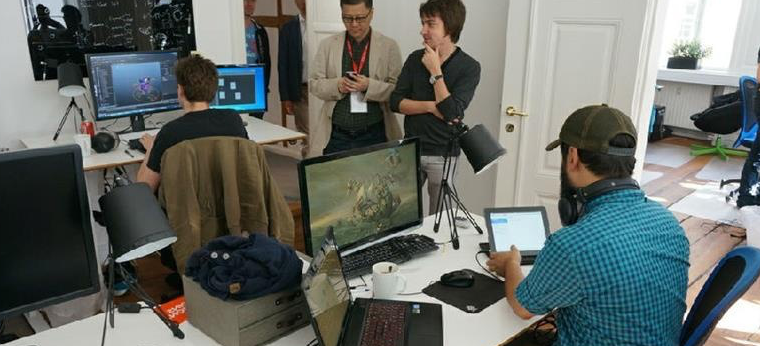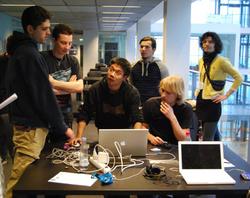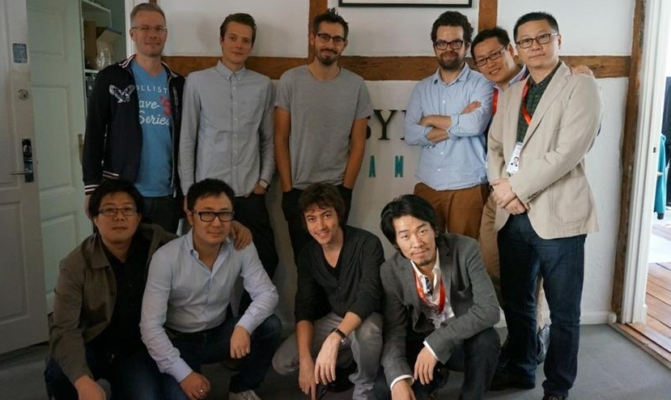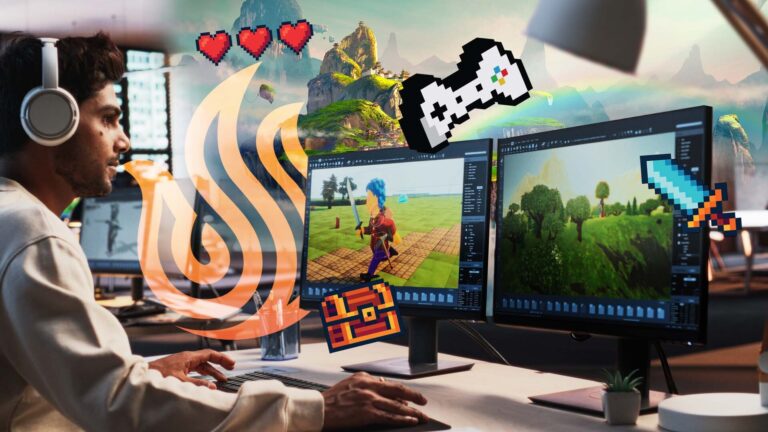These days when teenagers are capable of learning autonomously and producing outstanding results individually, one might wonder just how important collaboration and teamwork really are in the creative industry. Why would a sound designer, a composer, an audio engineer, a video editor, a graphic artist or an animator need to know how to collaborate with others when he or she can simply do the work alone? Would it not be simpler for them to do what they are trained to do without having to share their ideas, without having to agree to a compromise that satisfies someone else’s taste, without feeling obligated to give up ideas in order to incorporate the thinking of others into the work?

The key to the answer is the mindset. Looking at it as an obligation, a forced collaboration isn’t going to reveal the many benefits that working in a team has. Rather, it can limit an individual’s ideas and skills to his or her predetermined ideas and skills. But, when collaboration happens organically, the benefits are enormous on many levels. Let’s take a look at the importance of collaboration and teamwork in the creative industry.
Direct, personal benefits of collaboration and teamwork
Collaborating with creatives who have a similar mindset but different skills or experience can directly benefit you. A team member with more in-depth knowledge, previous experience with a specific task, another perspective on a situation requiring problem solving, or even just a new shortcut in your favorite software, can teach you new information in practice, while you and others are applying it together in real time. Imagine that you’re editing a video, and you’re facing an audio sync problem that must be solved in order to continue working. Sure you can find the answer online. But, looking up the solution in an article or video would halt your creative workflow for long minutes, possibly hours, taking you out of the “zone” of creative work. Now imagine that besides the sync problem, there are 12 different brand new issues that have cropped up in the project — the chances that you have the answer to each is quite small. A team of two would have twice the chance, and a team of 10 would have a tenfold chance to have the answer within the group — right away, right there, at no cost. Consequently, cross-sharing knowledge within such a team by each of the 10 members would benefit each member tenfold. It’s organic learning by collaboration. It’s free, immediate, and sticks better too.
On the other hand, working with people who think differently (and might be even hard to collaborate with) has its own benefits: forms of creative disruption. Similar minds with similar experiences often see the same solution to a challenge — but this might be only one of the possible solutions, and not necessarily the best. Seeing and solving the same problem with someone else’s mind requires someone else to be there, to be able to communicate his/her experience, and to be willing to share his/her approach. This is one of the biggest gifts a creative producer can receive: the ability to see into another intellect in which solutions work completely differently, yet they produce the desired results. These types of experiences can enable individuals to look at future challenges from many different angles, and choose the option that fits a particular situation best.
During creative team work, students get to know not only each other, but also themselves. They can analyze their own skills, efficiency and reactions to requests. They can reflect on their response to critiques, to the pressure of time and responsibility. They can re-evaluate their critical thinking and decision-making skills. How do these measure against the best of the group? Where are your deficiencies (room for improvement) and your strengths (opportunity to lead)? What’s the best distribution of skills and tasks for the team’s ultimate success?

Collaboration benefits for the creative project
The productivity of a team versus those of an individual has obvious benefits for the creative project. Of course, a team has a larger cumulative knowledge base across more minds with more ideas. Used effectively, this results in more condensed production processes. If the team is a well-organized one, this also ensures better productivity, often higher quality, more creative output, longer-lasting motivation, greater efficiency and faster delivery.
A well-structured team is capable of achieving results that would take unreasonable amounts of time or require unfeasible resources for an individual to obtain. We don’t have to go farther than Hollywood to see the potential of individuals with various specialties (or simply various personal strengths) working together. No one in a production team is capable of producing an entire A-level feature movie alone in a year, of course, but more interestingly, such a movie would never see the light of day if professionals were simply contributing their ideas and skills without real-time communication and interaction. Imagine, if the composer submitted the score via email, the director instructed the sound designers only via written notes, the director of photography shot the scenes based on a reference picture and the animators only got a printed list of character attributes; the production would quickly fall apart. Real-time, two-way communication is essential — essential for a team to get on the same page, to creatively motivate and bounce ideas off of each other, to brainstorm while acting as a control group and focus group in one – and to learn from each other throughout the process.
Working in a team is like a puzzle; every member has a unique shape that becomes part of the big picture. Being able to experience the role of each and every puzzle piece, regardless of the professional area or discipline they come from, helps each individual realize his/her own role and that role’s importance in the entire project.
The team experience also teaches each member something about the work and work habits of others. Sometimes we finish an individual project thinking, “I have the hardest job,” but often seeing what it takes for other team members to do their jobs makes us feel like we should never complain.

Portfolio and employment benefits when collaborating with a team
Employers not only recognize, but increasingly more often expect to see collaborative work on individual portfolios in the creative industry. This is quite simply because very few work individually in production, and nobody works without having to communicate on the job. Whether you are employed by a large corporation or a small shop, you have a boss, a director or supervisor and colleagues. Running your own business? You have vendors, suppliers, and most importantly, clients to communicate with. If you have collaborative work experience, the chances are you will be taking your people management and your advanced communication skills, both written and oral, to the next job. I would go as far as saying that the chances to get hired by any company with more than 10 employees are greatly improved if you have some collaborative work experience under your belt and on your résumé. Having to deal with professionals of different personalities, backgrounds, education and experience makes you a more effective professional and a better leader, indeed. Companies recognize this value.
And, among the many long-term benefits of collaboration and teamwork in the creative industry, one must not neglect the power of networking while on the job! Although it would be an exaggeration to compare a single project experience to the experience of war veterans or a sports team, the basic idea is the same: going through the same experience together — taking a project from concept to execution to delivery — will come with takeaways and memories meaningful only to those who took part in it. Working in a team, or even with another team, for hours or weeks or months toward the same goal creates a natural bond among the members.
Why is this a benefit? During any project, you get to know professionals from other disciplines. Don’t underestimate these connections, even though at the time they might seem practically meaningless! A wannabe film composer’s best chance to “make it” is to support a few directors from their start, to become their frequent collaborator, then to prepare to be their “default composer” once a director gets his or her break. Similarly, getting to know other team members and collaborating with them can help us see who are the ones we should get to know more and who are the ones to stay away from — all this on the job, without any investment of our own!
These benefits reflect the importance of teamwork and collaboration in the creative industry. The larger the creative team, the larger the art project, the greater the value for the individual with an open mindset, who is ready to learn, expand, connect and succeed.


